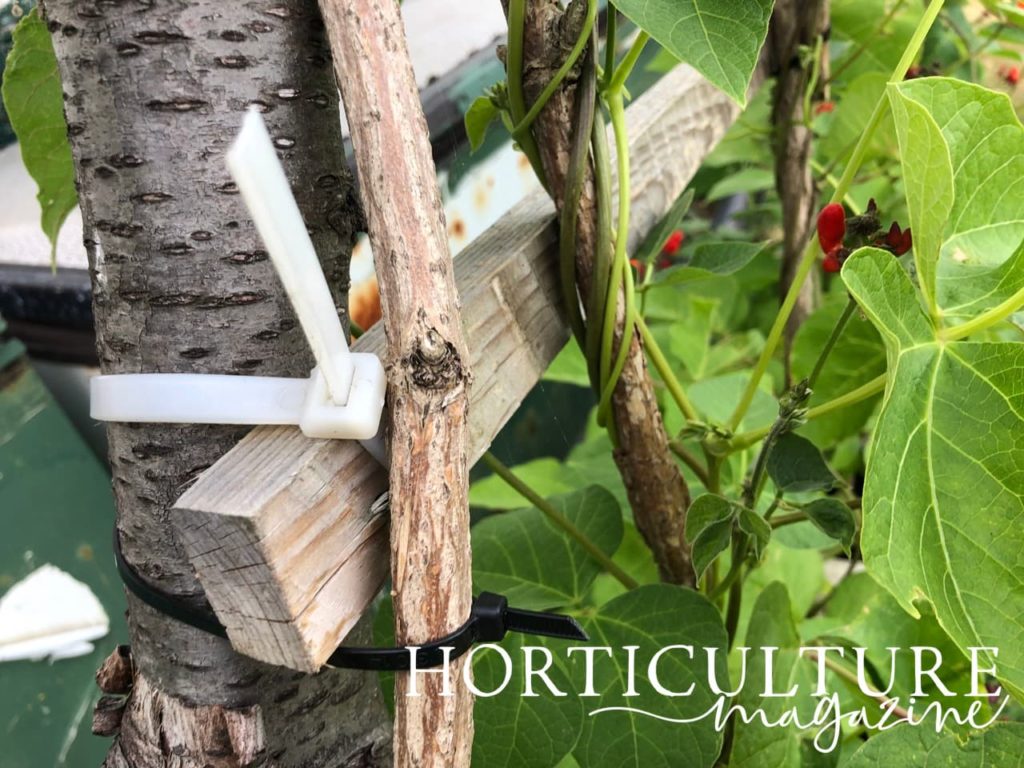Supporting Climbing French Beans – ‘Hang At A Good Sheltered Harvestable Height’

VEGETABLES > FRENCH-BEANS > SUPPORT

Elizabeth is a Permaculture Garden Designer, Sustainability Consultant and Professional Writer, working as an advocate for positive change. She graduated from the University of St. Andrews with an MA in English and Philosophy and obtained a Diploma in Applied Permaculture Design from the Permaculture Association.
Reviewed By DAN ORI

Dan has over 27 years’ under his belt caring for plants and gardens. Working as a Horticultural Instructor and Consultant, he draws on a diverse range of experience that includes working as a Head Gardener, Tree Surgeon, Garden Centre Trouble Shooter, and writer of academic papers. Dan has a Level 3 Diploma in Horticulture and is currently a candidate for the RHS’s most prestigious award – The Master of Horticulture.
Contributions From EMILY CUPIT

Emily is a Gardening Writer, Photographer and Videographer from Derbyshire, UK. She is the Founder of Emily's Green Diary - a community of more than 75,000 people who share in her gardening journey.
IN THIS GUIDE
FRENCH BEANS GUIDES
French beans are popular crops to grow in UK gardens.
They can be relatively easy to grow, but choosing the right options and placing them in the right locations can be important.
Just as important is providing the climbing varieties with the means to grow vertically.
Which French Beans Need Support?

One thing to think about when choosing which French beans to grow is how much space you have available.
There are two main types of French bean that you might grow – dwarf beans, also known as bush beans, and pole beans, also called climbing beans.

Bush beans are typically grown so that they support one another.
They are best grown in blocks rather than rows and when grown in this way, they won’t typically need additional support or staking.

However, sometimes it may be beneficial to place short twiggy sticks into the soil between the plants to keep them upright and make sure pods remain up off the ground.
“I have grown bush beans in a hanging basket before, with the chains of the hanging basket giving some support,” shares Horticultural Consultant Dan Ori.
“It looked great when the pods hung down over the basket.
“The trick is to hang at a good sheltered harvestable height and keep them well watered.”
Climbing beans, on the other hand, are much taller-growing plants, which do always require some kind of support or staking.

Thinking about the options for this upfront is important, since you should have supports in place before you direct sow or plant out your French beans.
Support For Dwarf / Bush Beans
Smaller and lower-growing bush beans or dwarf beans can be grown without any support at all.
However, this can lead to issues when plants flop, and pods touch the ground.

You can however eliminate the need to place additional supports by growing these types of French bean close together, in blocks, so that the plants support one another.
You can place the plants in grids, around 15cm apart from one another.

Bush beans might also get a little support from companion plants, which provide structure to help keep plants upright and pods up off the ground.
But if you feel the need to place additional support, the solution is simple and typically free.

Simply take some natural twiggy branches from your garden or the surrounding area, and insert these in the soil between French bean plants (much as you might with peas) to give them a little additional support.
Support For Climbing / Pole French Beans

Climbing or pole beans grow much taller, and do need a sturdy support system.
Traditionally, bamboo canes or natural straight branches from a garden are used to create a support structure.

These are often inserted into the ground in two rows, then joined higher up to make an A or an X shaped framework.
In smaller spaces, a wigwam shape of canes can be created, but joining a circle of canes together near the top.
Plants will climb up each cane or branch, and should be spaced around 15cm apart.

It can be beneficial to gently tie newly planted beans to the canes to get them started.
“One common problem I see when gardeners want to harvest their beans is they find the growing support or twine is too close together,” adds Dan.
“When constructing your growing support, I recommend allowing enough distance for reaching between and cutting out your harvest.”
However, one interesting alternative to a man-made support structure for climbing beans is using other plants as support.
In the famous ‘three sisters’ companion planting scheme, beans are planted at the base of sweetcorn, and use the corn as a support.

The beans provide nitrogen for the system, and the third sister, squash, protects the others and provides ground cover around the area to conserve moisture and suppress weed growth.
So thoughtful companion planting to provide support could be another option to consider.
